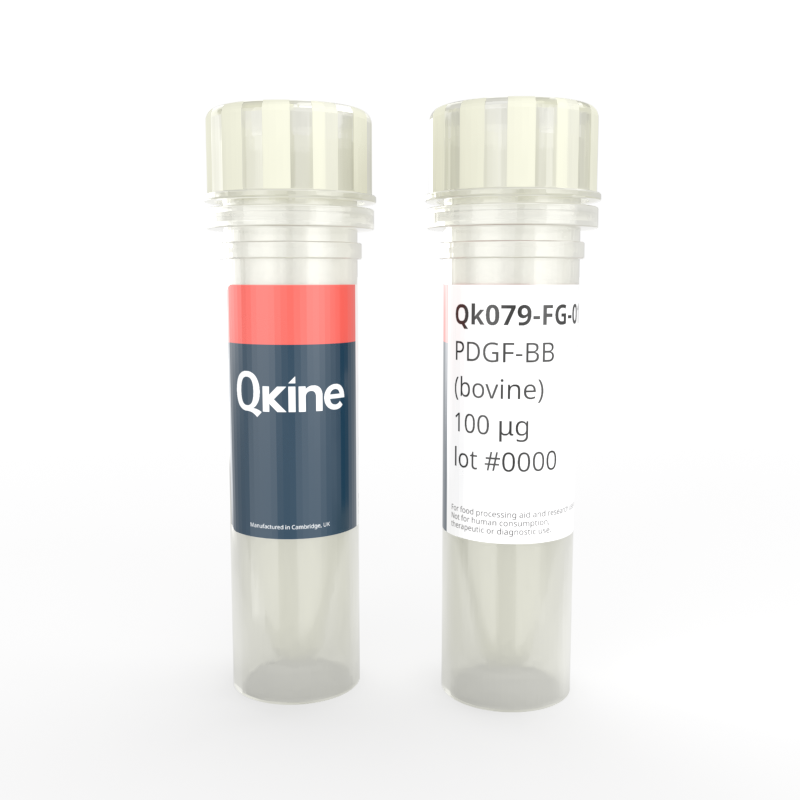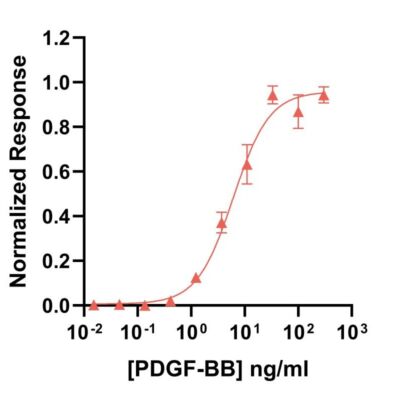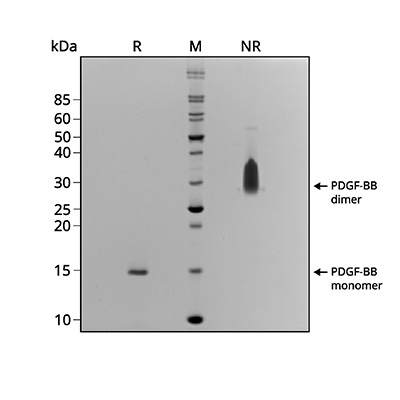Recombinant bovine PDGF-BB protein (Qk079-FG)
Bovine PDGF-BB (platelet-derived growth factor BB) protein is a homodimer of PDGF-B peptide chains. PDGF-BB can be used for the development of optimized serum-free culture media for species-specific bovine in cellular agriculture protocols. PDGF-BB can be added to bovine culture medium to promote rapid and efficient cell division, maintain high cell proliferation rates in bioreactors, promote the maturation of bovine myoblasts into myotubes and stimulate the production of extracellular matrix components.
Qkine bovine PDGF-BB is a high-purity 24.5 kDa disulfide-linked bioactive dimeric protein that is animal origin-free (AOF) and carrier protein-free. Qkine has optimised the bovine PDGF-BB manufacturing process to produce a highly bioactive species-specific protein with excellent lot-to-lot consistency for enhanced reproducibility.
Qkine high quality food grade products are intended solely for use as food processing aids, ex vivo cell manufacturing and research use. Not for direct human consumption, therapeutic or diagnostic use.
The authorization of novel foods, including the use of growth factors as food processing aids, is regulated by regional government agencies. The use of our products as food processing aids in novel foods requires the end-user to obtain the necessary regulatory approvals.






What others are saying
There are no contributions yet.